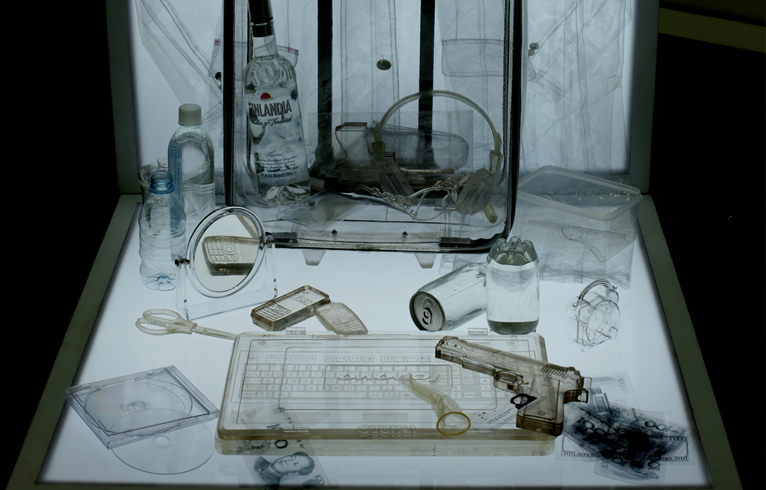WORDSCAPE POETRY PROJECT 2011
| April 5, 2012 | Post In LEAP 13

This project deals with the practice of exchange between poetry and art; it is also a plan of considerable duration and continuity that is still in the midst of execution. Positioned within the private art museum landscape as it is today— its good mixed in with its bad— it is an undoubtedly imaginative initiative. Its overall plan is divided into five parts: “Sound,” “Performance,” “Conversation,” “Documentary,” and “Horizon.” The first three parts cover the rich peripheral activity of non-visual art forms. In terms of expanding those faces and borders that may cross over into contemporary art, these activities all have positive significance— which is essential for a locally-focused mid-size museum seeking to stay afloat in the future.
The two parts primarily featured in OCT Art and Design Gallery are “Documentary” and “Horizon.” The former, curated by poet Zhang Er, assembles the poetry publications acquired over the years by one private collector and stacks these to form an archival wall several meters tall. Many of the issues are the only known copies of their kind, but all the audience can do is take in the wall in its entirety, as some sort of visual reminiscence of the creative circumstances surrounding poets during a set period of time. That is, due to a lack of corresponding historical background, this approach to presentation to a large extent reduces— or, it could even be said cancels out— the accessibility of the archives, consequently turning “Documentary” into a sort of accoutrement for “Horizon,” as opposed to a meaningful precursor.
Curated by Bao Dong, “Horizon” perpetuates his unwavering interest in the relationship between language and visual art. A cursory glance reveals that the connection between the works of the 21 participating artists— mostly young and Chinese— and poetry is embodied in the way in which the majority of the artists deal with elements of “language” and “text.” Obvious examples of this would be Jiao Yingqi’s The Study of Chinese Characters, Xu Tan’s Speech and Self-Justification, Jiang Peng’s “Word Maze” series, and Wang Yuyang’s Picture and Character. Encircled by throngs of text, Wu Junyong’s melancholic and fantastical paintings can be regarded as one pictorialized poem after another. Text, speech, and the shape of characters serve as both the theme and the components of creation, while language and narrative serve as the conceptual index. These are two enormously different creative approaches, the latter having more in common with poetry. Uniting the two under the heading of “contemporary art and language” comes off as slightly vague and over-generalized, and lends itself easily to an eyeball impression that posits “poetry as equivalent to text.”
Other than the connection with regard to language, the individually political nature of poetic creation, though not overtly apparent in the works or in the exhibition at large, is in fact intimately related to the lives and experiences of many of the artists. Chen Xiaoyun’s Why Life? and all of Jiang Zhi’s work to date can be seen as a form of “poetic political science,” echoing what Zhang Er refers to in the exhibition’s foreword: “Are contemporary art and poetry, these two originally interrelated modes of linguistic production, simply a strategy for conveying some kind of political message, or do they serve to reveal public and individual intervention into social issues?” In this regard, the fresh, minimal creations of Peng Yun, Huang Jingyuan, and Jean Klimack stand out. In essence, all of these works can be seen as a kind of narrative; the artists use fragmentary, poetic language, reproduced and restructured in combination with historical, realistic, or imagined images. Beyond romanticized, personal expression, considerations of individual and social context here cannot be entirely ignored. This is perhaps an alternative possibility for the intersection of contemporary poetry and art. Nikita Yingqian Cai (Translated by Dominik Salter Dvorak)

